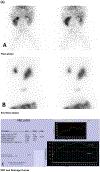Treatment of infants with ureteropelvic junction obstruction: findings from the PURSUIT network
- PMID: 33948809
- PMCID: PMC8282718
- DOI: 10.1007/s11255-021-02866-y
Treatment of infants with ureteropelvic junction obstruction: findings from the PURSUIT network
Abstract
Purpose: Studies based on administrative databases show that infant pyeloplasty is associated with minority race/ethnicity but lack clinical data that may influence treatment. Our objective was to identify clinical and demographic factors associated with pyeloplasty in infants from three large tertiary centers.
Methods: We reviewed infants with unilateral Society for Fetal Urology (SFU) grade 3-4 hydronephrosis seen at three tertiary centers from 2/1/2018 to 9/30/2019. Patients were excluded if > 6 months old or treated surgically prior to the initial visit. Outcomes were: pyeloplasty < age 1 year and SFU grade on most recent ultrasound (US) within the first year. Covariables included: age at the initial visit, race/ethnicity, treating site, insurance type, febrile UTI, and initial imaging findings. Univariable and multivariable analyses were performed using log-rank tests and Cox proportional hazards models, respectively.
Results: 197 patients met study criteria; 19.3% underwent pyeloplasty. Pyeloplasty was associated with: treating site (p = 0.03), SFU 4 on initial US (p = 0.001), MAG-3 (p < 0.001), and T½ > 20 min (p < 0.001) in patients undergoing a MAG-3 (n = 107). MAG-3 (p < 0.001) and location (p = 0.08) were associated with earlier time to pyeloplasty on multivariable Cox analysis. In infants with follow-up US (n = 115), initial SFU grade, MAG-3 evaluation or findings, and pyeloplasty were not associated with improvement of hydronephrosis.
Conclusions: We found that infant pyeloplasty rates vary between sites. Prolonged T½ was associated with surgery despite prior studies suggesting this is a poor predictor of worsening dilation or function. These findings suggest the need to standardize evaluation and indications for intervention in infants with suspected UPJ obstruction.
Keywords: Electronic health record; Practice patterns; Prenatal hydronephrosis; Ureteropelvic junction obstruction.
© 2021. The Author(s), under exclusive licence to Springer Nature B.V.
Conflict of interest statement
Figures




Similar articles
-
Functional outcomes of early versus delayed pyeloplasty in prenatally diagnosed pelvi-ureteric junction obstruction.J Pediatr Urol. 2015 Apr;11(2):63.e1-5. doi: 10.1016/j.jpurol.2014.10.007. Epub 2015 Mar 10. J Pediatr Urol. 2015. PMID: 25837703
-
Can we improve the usefulness of the diuretic renogram in the diagnosis of ureteropelvic junction obstruction (UPJO) in children? Introduction of mercaptoacetyltriglycine-suspected obstruction scoring system (MAG-SOS).J Pediatr Urol. 2023 Jun;19(3):311.e1-311.e8. doi: 10.1016/j.jpurol.2023.02.022. Epub 2023 Mar 2. J Pediatr Urol. 2023. PMID: 36922332
-
Initial observational management of hydronephrosis in infants with reduced differential renal function and non-obstructive drainage parameters.J Pediatr Urol. 2022 Oct;18(5):661.e1-661.e6. doi: 10.1016/j.jpurol.2022.07.023. Epub 2022 Aug 5. J Pediatr Urol. 2022. PMID: 35989171
-
The utility of renal medullary pyramidal thickness measurements on the first and second postnatal ultrasound in infants with congenital hydronephrosis.J Pediatr Urol. 2023 Jun;19(3):309.e1-309.e7. doi: 10.1016/j.jpurol.2023.01.002. Epub 2023 Jan 10. J Pediatr Urol. 2023. PMID: 36681584 Review.
-
Vesicoureteral reflux and ureteropelvic junction obstruction: association, treatment options and outcome.J Urol. 1997 Mar;157(3):969-74. J Urol. 1997. PMID: 9072627 Review.
Cited by
-
Postnatal Calyceal-to-Parenchymal Ratio: A Promising Predictor for Surgical Correction of Ureteropelvic Junction Obstruction in Newborns.Cureus. 2023 Nov 7;15(11):e48466. doi: 10.7759/cureus.48466. eCollection 2023 Nov. Cureus. 2023. PMID: 38073959 Free PMC article.
-
Epidemiology of Infantile Ureteropelvic Junction Obstruction in the US.Urology. 2024 Jan;183:185-191. doi: 10.1016/j.urology.2023.09.024. Epub 2023 Oct 5. Urology. 2024. PMID: 37802192 Free PMC article.
-
Parental experience and understanding of parent-provider discussions of treatment for infants with ureteropelvic junction obstruction.PEC Innov. 2023 Feb 21;2:100142. doi: 10.1016/j.pecinn.2023.100142. eCollection 2023 Dec. PEC Innov. 2023. PMID: 37588298 Free PMC article.
-
A Comparative Analysis of Robot-Assisted Laparoscopic Pyeloplasty in Pediatric and Adult Patients: Does Age Matter?J Clin Med. 2022 Sep 25;11(19):5651. doi: 10.3390/jcm11195651. J Clin Med. 2022. PMID: 36233520 Free PMC article.
References
-
- Mesrobian HG, Mirza SP. Hydronephrosis: a view from the inside. Pediatr Clin North Am 2012. August; 59(4): 839–51. - PubMed
-
- Siemens DR, Prouse KA, MacNeily AE, Sauerbrei EE. Antenatal hydronephrosis: threshholds of renal pelvic diameter to predict insignificant postnatal pelvicaliectasis. Tech Urol 1998; 4(4): 198–201. - PubMed
-
- Fefer S, Ellsworth P. Prenatal hydronephrosis. Pediatr Clin North Am 2006; 53:429–47. - PubMed
-
- Riccabona M, Avni FE, Blickman JG, Dcher JN, Darge K, Lobo ML, Willi U. Imaging recommendations in paediatric uroradiology. Minutes of the ESPR uroradiology task force session on childhood obstructive uropathy, high-grade fetal hydronephrosis, childhood haematuria, and urolithiasis in childhood. ESPR Annual Congress, Edinburgh, UK, June 2008.Pediatr Radiol; 2009. August; 39(8): 891–8. - PubMed
Publication types
MeSH terms
Grants and funding
LinkOut - more resources
Full Text Sources
Research Materials
Miscellaneous

